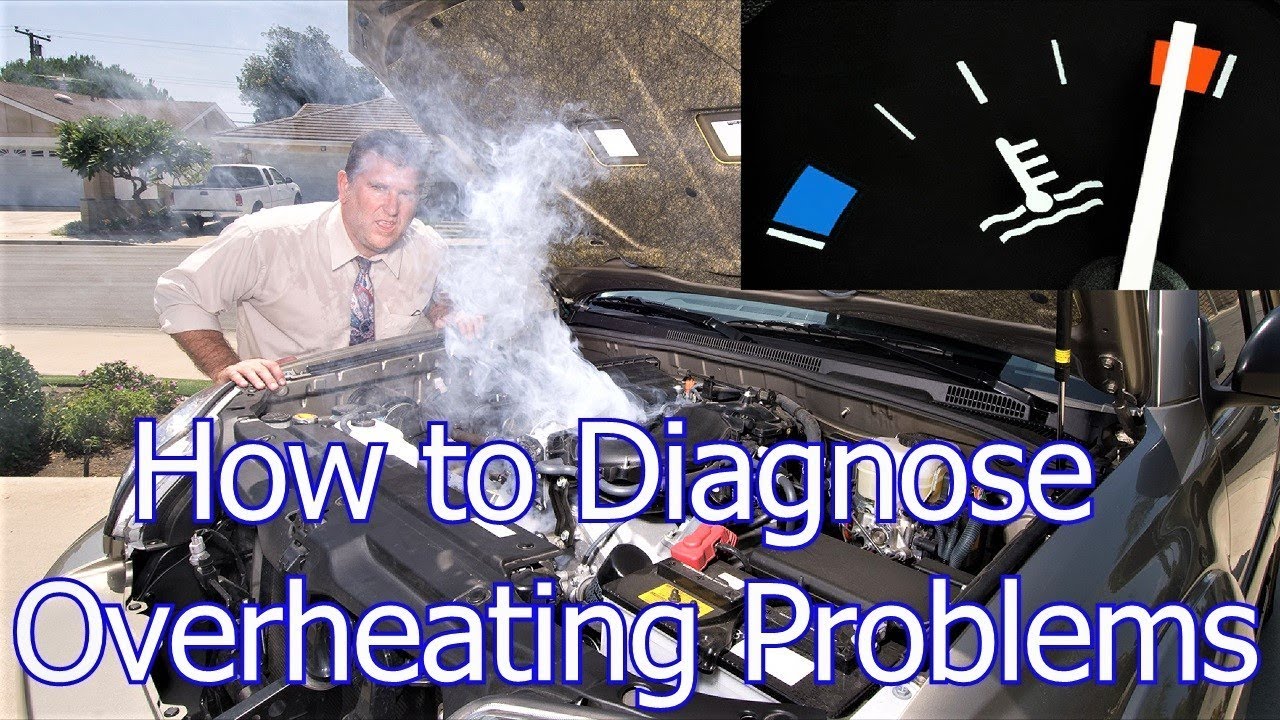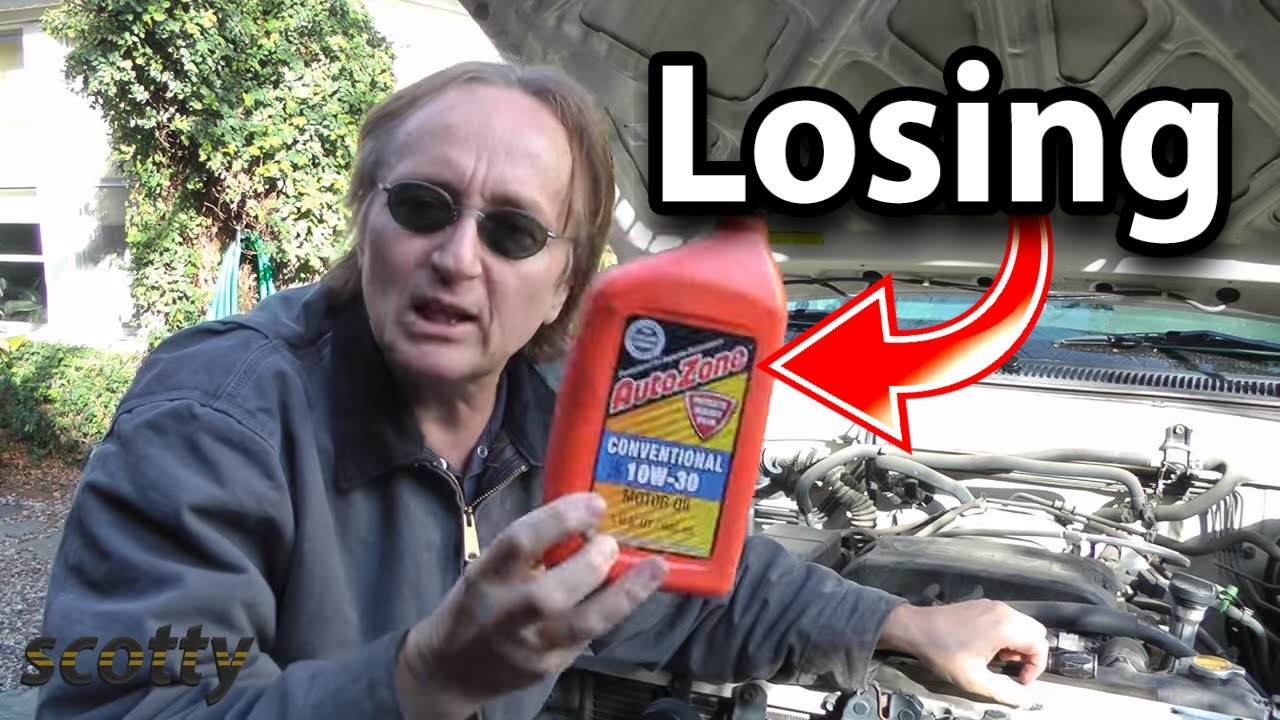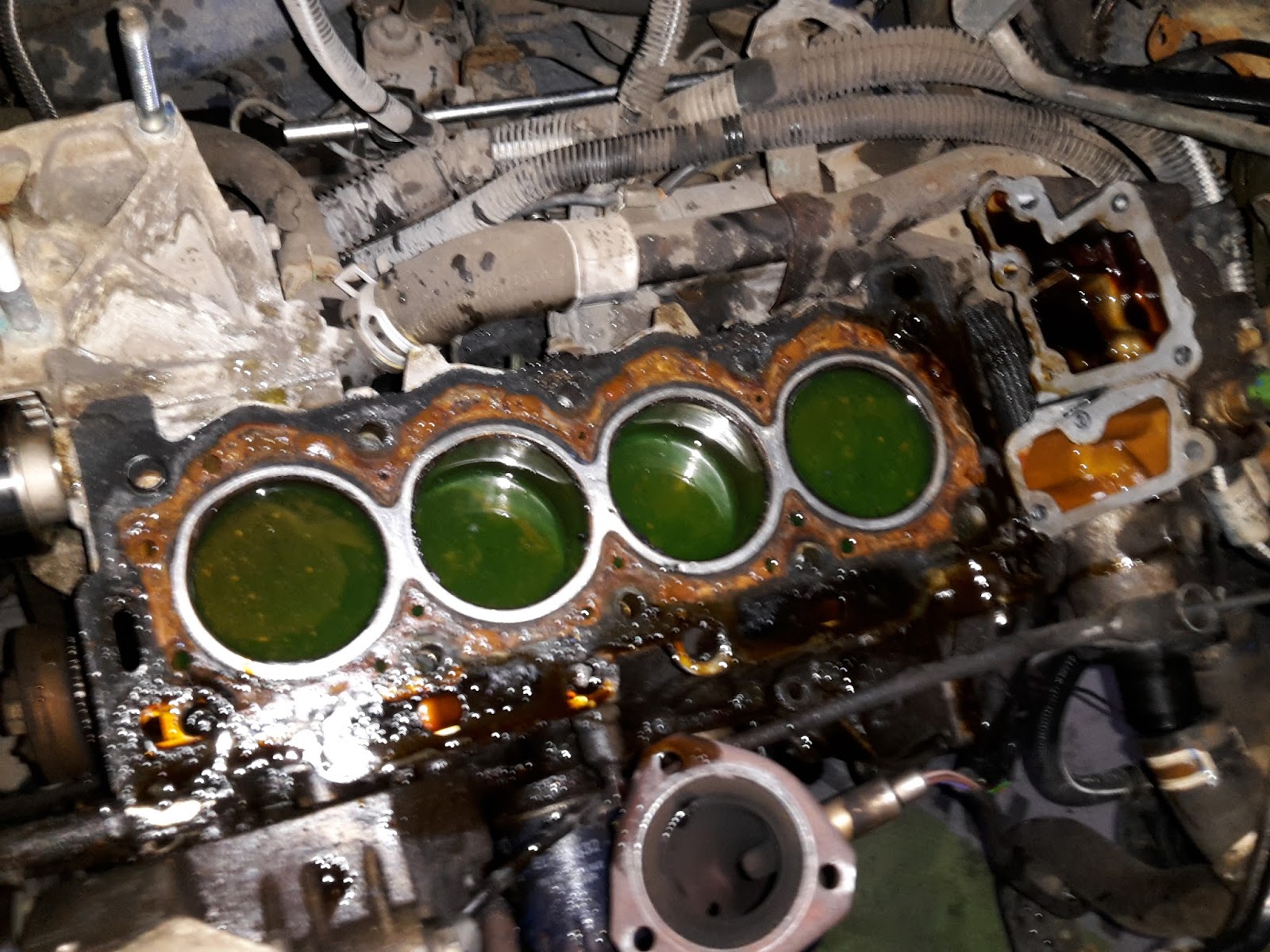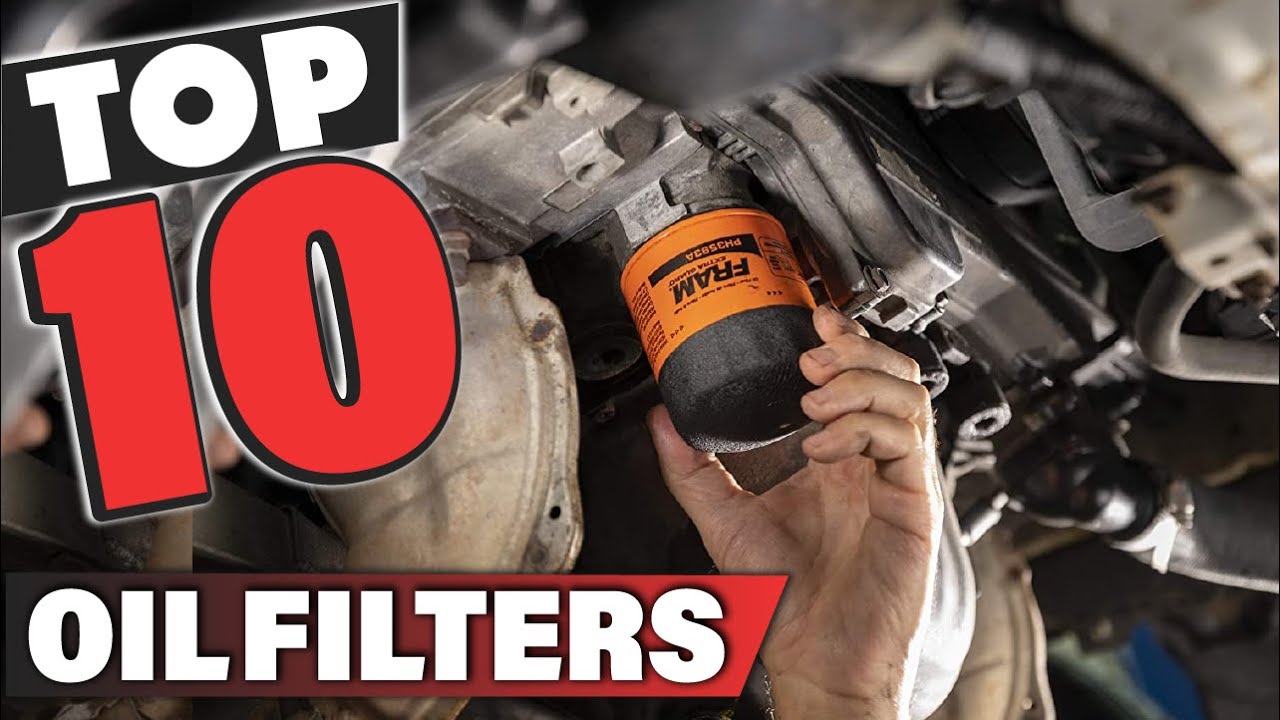Is your car puffing out white smoke like a chimney after an oil change? It’s time to play detective and crack the case of your car’s smoky signals. Discover the hidden culprits and quick fixes to clear the air and get your engine purring again.
Possible causes range from using the incorrect oil to a blown head gasket. This guide goes over all the possible causes and shows how to stop smoking. Please keep reading to find out more about engine smoke and how to avoid it in the future.
The removal of debris and varnish deposits from the engine’s valves and cylinders by the fresh oil might cause the vehicle to consume (burn) more oil and cause smoke to be released.
Common Causes Of The White Smoke Leaving Your Engine
If white smoke starts streaming out of your car’s exhaust, you may have a serious issue that requires fixing before you do any permanent damage to your engine.
Wrong Choice of Oil
Putting the wrong kind of oil in your car’s engine will cause it to smoke. Both synthetic and conventional oils are needed for different types of cars. Thus, before you buy, make sure you read the manual.
If you put the wrong kind of oil in your car’s engine, it will start smoking a lot. It’s because oil isn’t burning properly and is contaminating the exhaust. This causes white smoke to come out of your tailpipe.
Solution:
Changing the oil is an easy and inexpensive way to solve this problem, and you can find the right type of oil at any auto parts store.
Extra Oil in the Sump
It’s possible for oil change professionals to overfill the engine with new oil. If too much oil is added, the engine will start to smoke.
Too much oil in the sump can cause the exhaust to emit a bluish-white color smoke after you’ve just changed the oil. During an oil change, it’s common for the fresh oil to overflow into the sump since the pressure in the engine has pushed the old oil downward.
Excess oil can seep past the engine’s seals and gaskets, causing damage and expensive maintenance fees in addition to smoke.
Solution:
Immediately pull over and have a professional remove some of the oil from the sump if this happens to your vehicle.
Leaking Valve Stem Seal
White smoke can be produced when oil enters the combustion chamber due to a leaking valve stem seal. Valve stem seals are hollow rubber parts positioned on either side of your car’s valves.
Solution:
Replacing these will solve the problem. Use the best quality valve stem for the task at hand. Those are extremely adaptable and can be used with either original equipment or aftermarket seals.
Blown Head Gasket
One of the worst things that can happen to an engine is for the head gasket to blow. The engine will start smoking, overheating, and losing oil pressure as a result.

The head gasket prevents oil and coolant leaks by sealing the engine block to the cylinder head. Your car may be burning oil instead of gas due to a burst head gasket leak if no water or coolant reaches the combustion chamber. This will cause white smoke to come out of your car’s tailpipe.
Solution:
If you find a problem with your vehicle’s coolant system, it’s important to get it checked out as soon as possible by a professional technician.
Broken Car Cylinder
Oil might spill into the engine if a cylinder is damaged. White smoke may appear to be coming from your tailpipe as a result. If oil leaks onto hot components like the exhaust manifold or catalytic converter, it might produce smoke. If you don’t take care of this fast, your automobile can shut off unexpectedly.
Solution:
Avoid this by promptly mopping up any oil spilled during the oil change process. In case of a damaged cylinder, it’s probably the best idea to take the car into repair so the professionals can take a look at the engine.
Different Types of Engine Smoke
There are different kinds of exhaust smoke with different meanings.
Black Smoke

When your car emits black smoke, it means you’re using too much gas. This happens when dirt and debris become trapped in ventilation systems. As a result, the engine is starved of the air it needs to run smoothly.
There’s a wide variety of problems that might cause black smoke, from faulty fuel injectors to broken sensors. Another cause of black smoke is a faulty pressure regulator that doesn’t keep the right fuel at the right pressure. Last but not least, engine smoke after an oil change can be caused by blocked fuel passageways.
White Smoke

The white smoke is primarily due to burning coolant. If the engine block or cylinder is fractured or damaged, the coolant will leak. Head gasket failures can also cause white smoke and coolant leaks.
If this happens, you need to get your car to the shop right away. Any delay in the repair will cause the engine to overheat and breaks down.
Gray Smoke

Gray smoke can be seen coming out of the exhaust of a car with a faulty turbocharger. It’s because your engine’s turbocharger isn’t compressing air properly.
The exhaust contains unburned fuel because of incomplete combustion of the air-fuel mixture. The gray smoke could also be the result of burning oil or the transmission.
Blue Smoke
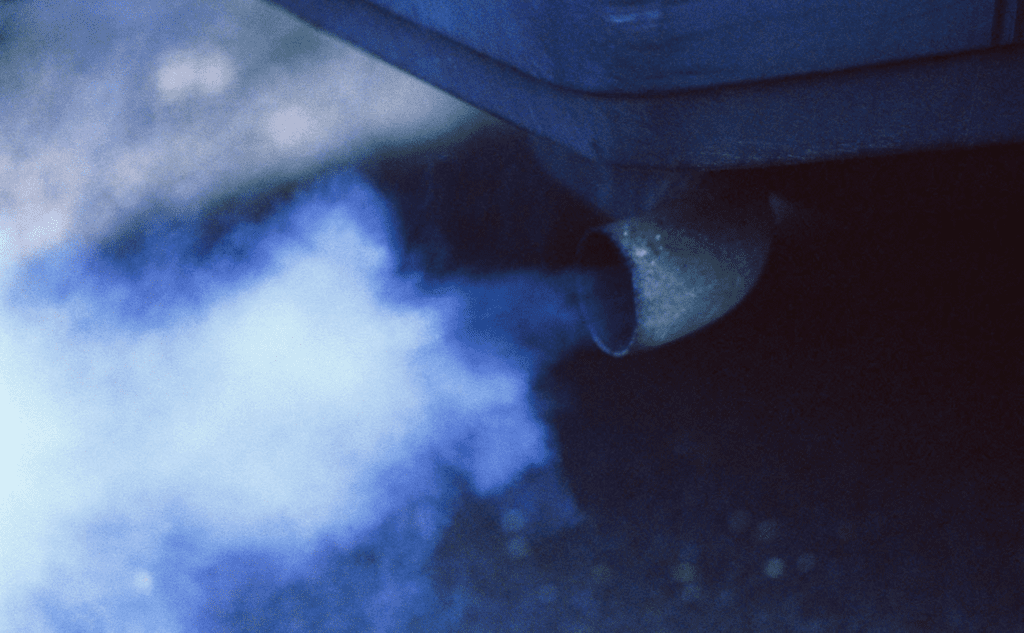
When an engine emits blue smoke, it means oil is being burned. Piston rings that have worn out are to blame. It’s a sign of oil getting into the fuel and catching fire in the combustion chamber.
If your car has a turbocharged engine and you notice blue smoke, it may be time to replace the blowers. Rough ignition caused by burning engine oil will wear out the spark plugs.
FAQs
Why is my engine smoking but not overheating?
The engine has been contaminated by some fluid. This can be anything from moisture to engine oil to fuel to transmission fluid to the coolant. When this happens, the engine smokes because the fluid is being burned off.
Why does it smoke when I add oil?
Exhaust gases, heat, or gasoline vapor react with air to produce a trace quantity of smoke. But if a lot of white smoke comes out of the dipstick and oil cap, it’s likely that there’s damage inside the engine, especially if it’s hard to start.
Can I drive my car with white smoke?
You should stop driving the car immediately. A gasket failure or crack in your engine could cause more pollution or overheating, leading to the end of your engine.
Does Low Oil Cause White Smoke?
White smoke doesn’t result from low oil. But white smoke can be a sign that you’re using a poorer quality oil than what the manufacturer recommends.
Conclusion
Using the incorrect oil, leaving too much oil in the sump, or a leaking valve stem are the most common causes of white smoke following an oil change. In addition, the car may emit white smoke because of a burst head gasket or a broken cylinder. Oil may not work well to protect your engine under these conditions, producing white smoke.
To avoid this from happening, it’s best to take care of the proper maintenance of your vehicle. In case of any issues, turn to your mechanic.

